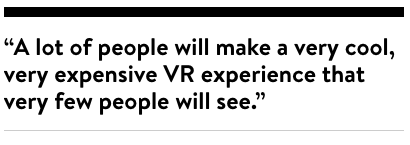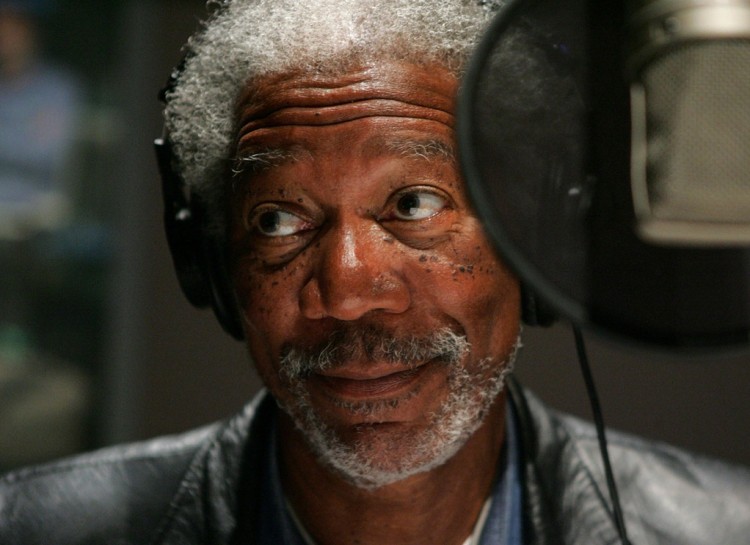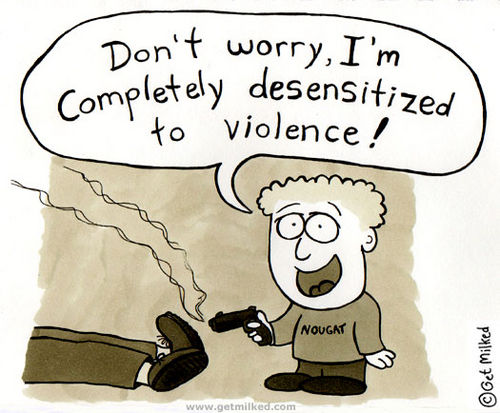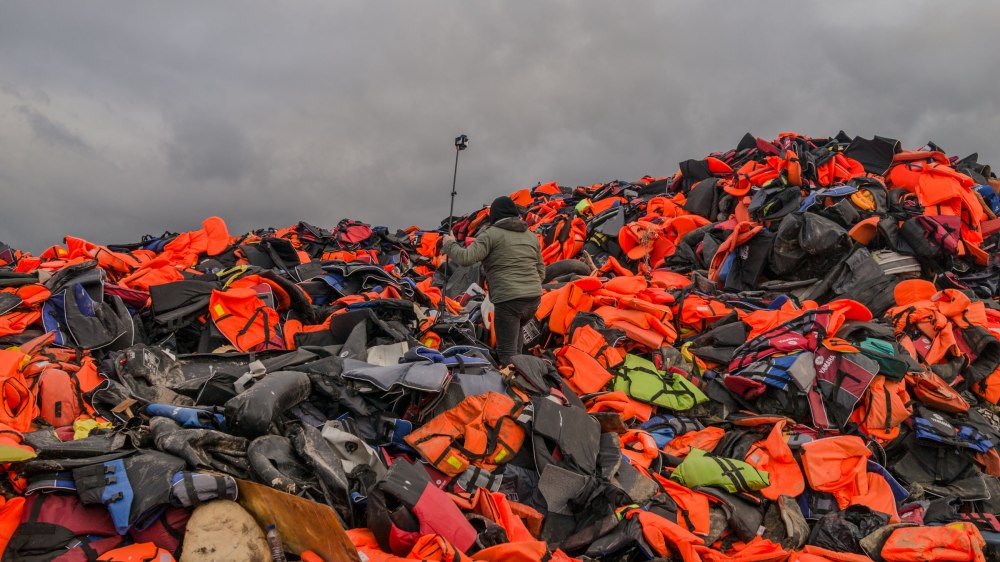
In the article, “One Startup’s Quest to Save Refugees With Virtual Reality“, journalist Abe Streep focuses on a company, Ryot, who utilizes virtual reality as a “transportation device” to fully immerse the international audience in 360-degree footage to connect them to the plight of disaster-struck victims from afar. Ryot hopes to revolutionize humanitarianism, foster empathy, and request monetary donations for the afflicted. Streep adopts a skeptical tone and contests the efficacy of Ryot’s VR use through subtle irony in his design structure and arguments. Although a powerful medium, VR integration in humanitarian efforts is possibly detrimental to viewers in that VR experience can foster desensitization or even deception.

Ryot claims that their immersive media takes objectivity to a new realm as “we convey nuanced reality like never before, cutting through media landscape saturated with 2D images of suffering” (Streep). Unlike previous 2D media and films, Ryot’s VR disposes the characters, content, and stories and only captures the raw, visceral content of the refugees’ experiences. It is to this notion that Streep incorporates expansive images into his article. These images span across the entire screen and are unavoidable to viewers when reading. Streep parallels VR’s immersive feature, ironically, via these two-dimensional images. Ryot asserts that VR is an empathy-generating machine, but instead of displaying VR footage, Streep relies on traditional journalistic tools like 2D images to allude to his, and the general public’s, dubiousness of the immersive, empathy-eliciting VR experience. When the reader scrolls upon any of these expansive images used to mimic the immersive touch of VR, there is a dearth of emotional connection, an absence of the refugees’ voices due to the static scenery of the images. Through this ironic interplay with 2D photos, Streep qualifies Ryot’s stance in that “[VR] is essentially a immersive disaster porn “tailor-made” for the iPhone that is viscerally affecting, but with little to no context” (Streep).
In addition, because of the immersive VR experience, “a viewer’s ability to look in any direction in VR makes it difficult to focus their attention on any given plot point” (Oremus). Streep subtly hints at this notion through his article’s aesthetic design. He illustrates the attention-robbing theme of VR via incorporation of images and large pull-out text-boxes filled with magnified text that underscore his assertions. As viewers read down the streamlined, centralized text formatting that allows for an easy, pleasant read, they encounter difficulty focusing on the text and is distracted once the visual stimuli of images and text-boxes appear.


This parallels a user’s experience once VR goggles are worn. Projected into an all engrossing, 360-degree visual scope, one forfeits the ability to pay attention and to focus due to the persistent saturation of visual sensory stimuli. Others may contend that despite visual distractions, verbal narration in VR allows viewers to remain focused and attentive. Such narration, however, is voiced by Western celebrities, such as Susan Sarandon, and not by the refugees of the afflicted regions. Ryot deliberately uses the status and fame of celebrities as a marketing tool to attract viewers to its full range of products. This intention serves as a latent form of distraction; viewers are attracted by the celebrity’s narration at the expense of the refugee’s input of his or her own struggles, which ultimately impairs the authenticity of virtual reality.

Unfortunately, Ryot’s optimism with VR raised “the same amount of money at the past two annual galas – in 2015 with VR experience and in 2014 without one” (Streep). A reasonable explanation for this monetary stasis can be attributed to desensitization. VR can augment empathy in viewers who are unaware of global events though there exists a point of diminishing returns. The persistent exposure to VR stagnates or even inhibits empathy as one becomes more accustomed to VR’s depiction of global strife, which consequently triggers emotional disconnect. This virtually induced emotional disconnect translates to the suppression of emotions in reality. Imagine viewers who had numerous VR exposures to the violent Syrian war and the killings of the Syrian people. From the over-saturation of virtual violence, viewers may project their desensitization to virtual violence onto violence in the real world. Natural human emotions of empathy, compassion, or sympathy would be jeopardized, fostering “a new brand of disaster tourism, that enables the privileged to traipse in and out of video game-like crisis zones” (Streep).

People may argue other wise, for example, of the Chernobyl nuclear disaster tourism. Though haunting, the Chernobyl VR feed captivates and shows the global community the harmful ramifications of unchecked nuclear energy use. Counter to desensitization, the disaster tourism of Chernobyl instead sensitizes viewers to the nuclear sector and educates national agencies to enforce precautionary measures with nuclear power. This greater awareness and oversight enhances the safety of today’s society. However, the beneficial aspect of disaster tourism is a very complex issue and really depends on the type of disaster that is looked at. Generally, suggested by Streep, the negative consequences, such as desensitization, outweigh potential benefits offered by disaster tourism.
Accompanying the desensitization aspect is VR’s deceptive portrayal of reality. To Ryot, foregoing artistry equates to exchanging subjectivity for objectivity. Previous media relied too heavily on fancy equipment in capturing the “prefect angle, perfect lighting, and perfect moment” (Streep). Ryot uses ordinary GoPros and iPhone to get a more “honest” take, so they claim.

Ironically, their VR feed is just as subjective as media predecessors. The cameraman films at certain locations to achieve the agenda of delivering an emotional-gripping feed for viewers. Post-production modification via editing software makes the VR feed anything but honest. Humanitarian organizations all have an agenda; that agenda is to persuade or virtually guilt-trip people to donate money. Thus, VR purposefully captures certain scenes that are not necessarily representative of a population’s plight, but nonetheless conducive to appealing to viewer’s emotions. VR even strips the refugees’ own voices, and instead tasks celebrity narrators to retell it. These well-calculated manipulations are nothing short of deception. At least, we can say that Ryot uses VR for a noble, humanitarian cause. What if VR is abused and used to deceive us in other aspects of our lives? What if VR is used for ulterior propaganda purposes or for greedy financial objectives to amass private profit?
In his final sentence, Streep closes with blatant irony as a paramount recapitulation of his argument, “I turn my head in all directions, listen to the virtual wind, and recall the most haunting element of that place: the smell” (Streep). What he remembers most poignantly is the exact element that VR cannot convey, something that only an actual physical experience can give. VR showcases the astonishing power to mimic the world, but ultimately fails in connecting our minds to our physical bodies, a notion well demonstrated by the sense of smell example. Virtual reality experiences will always fall short of the physical experiences one may have, since anything real cannot be virtual, and anything virtual cannot be real.